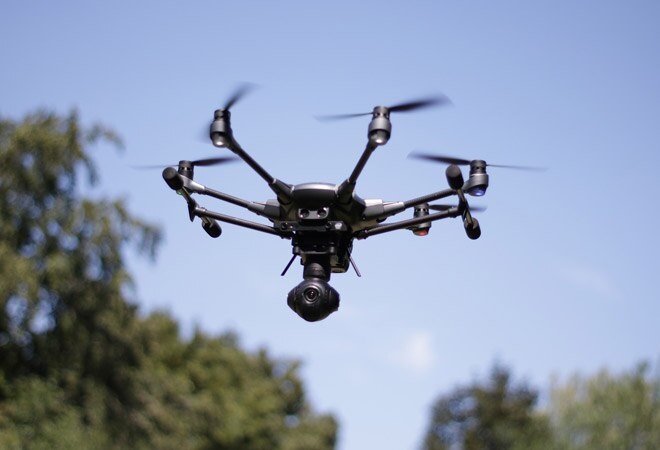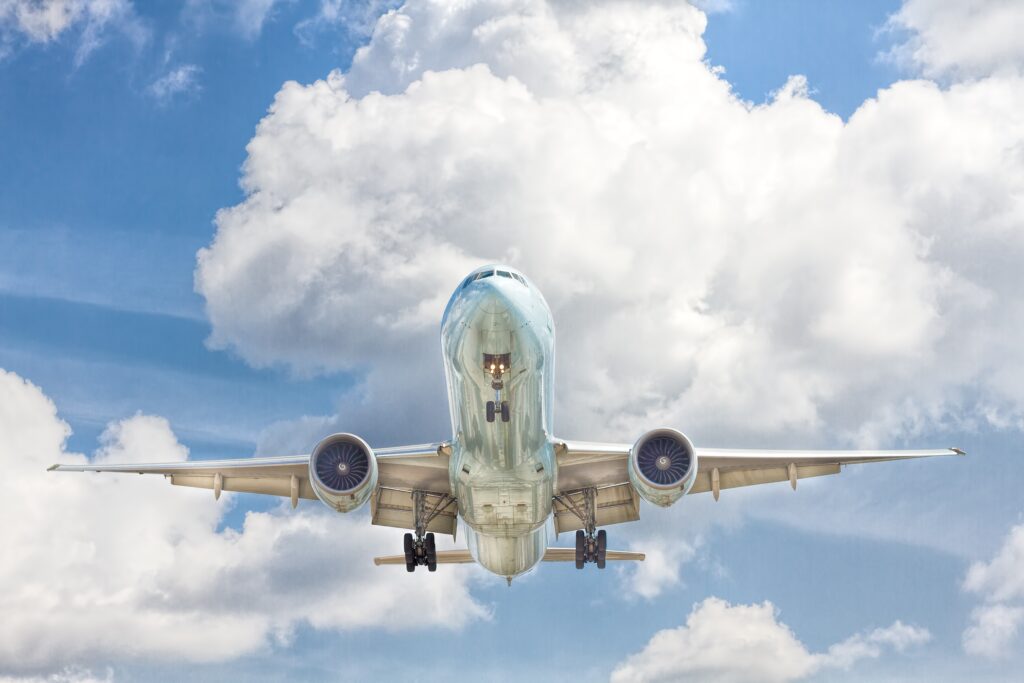
Currently, only a few general insurers in the Indian Market are offering insurance cover for RPAS/Drones through existing products under Aviation Insurance. Considering the unique characteristics of Drones that differentiate them from other aircrafts and taking into account the phenomenal growth in the usage of Drones for multiple purposes, there is a need to augment the current insurance availability customized to the requirement of drone owners and operators.
2. In line with the above objective of making basic insurance covers available by the general insurers for Drones and to facilitate flexibility and innovation in the development of insurance coverage for evolving technology requirements, the following product construct is provided.
a. Section I: Legal Liability to Third-Party.
Indemnify the insured against its legal liability (including Defence Costs) to pay Damages, for third party civil claims arising out of bodily injury or death or property damage, by an accident or a handling error on part of the authorized operator. Currently, TP Liability cover should be offered in line with Aircraft/ Aviation Liability. The change, if any, in Government of India rules/guidelines in respect of TP Liability cover for Drones from time to time may be adhered to.
b. Section II: Physical Damage to Drone Body /Hull
Indemnify the insured in respect of repair/replacement of the insured RPAS. RPAS means an Unmanned Aircraft System including payload, ground handling tools and/or equipment on Hull Agreed Value basis.
c. Section III: Personal Accident cover to Operator.
Indemnify the Insured/ Authorised operator for bodily Injury sustained by the Insured/ Authorised Operator anywhere in India while operating drones and arising out of an Accident.
d. Section IV: Medical expenses cover to operator.
Indemnify the Insured/ Authorised operator for the medical expenses who has been hospitalized because of a Bodily Injury arising out of flight of the covered Drone.
e. Optional Covers to enhance the coverage.
Alternate Hire Charges
Drone War Liabilities
Cyber Liability Cover
Invasion of Privacy Cover
Night Flying Endorsement
BVLOS Endorsement
Drone in Transit Endorsement
Liability for damage to UAS that insured does not own
Personal & Advertising Injury Liability
3. The Authority had constituted a working group to suggest, inter alia, product construct. The group has developed a model product, the wordings of which are given in the Annexure. All general insurers are encouraged to file this product as per the procedure required under the extant Product Filling Guidelines. Alternatively, the insurers may design and develop their own product keeping in view the minimum coverage as specified in the given Policy Wording. The filling of the said product/s may be carried out at the earliest to respond to the new and quickly growing market.
4. Any such product should necessarily offer third party insurance covering the liability that may arise on account of any mishap involving drones and causing death or bodily injury to any person or damage to property.
Vide Reference No.: IRDA/CIR/MISC/031/02/2021
Aviation insurance is a policy that offers property and liability coverage for aircraft. It covers losses resulting from aviation risks that come about due to the maintenance and use of aircraft, property damage, loss of cargo, or injury to people. It protects both its owners and aircraft operators from unforeseen losses.

AVIATION INSURANCE
Aviation insurance is also known as aircraft insurance.
Many states require aircraft owners and operators to purchase coverage that provides for third party liability, which would have them pay for either part or all the medical expenses of those injured when they are found responsible for an aircraft accident. The premium charge depends on the aircraft being covered, e.g., experimental, standard, or vintage aircraft. Other expenses that aviation insurance may provide for include search and rescue operation costs, personal injuries sustained while operating the aircraft, as well as the costs incurred due to emergency landings.
Aviation Insurance was first introduced in the early years of the 20th century. The first-ever aviation insurance policy was written by Lloyd’s of London in 1911. The company stopped writing aviation policies in 1912 after bad weather at an air meet caused crashes, and ultimately losses, on those first policies.
The first aviation polices were underwritten under marine insurance by the underwriting community.
The first specialist aviation insurers emerged in 1924.
In 1929 the Warsaw convention was signed. The convention was an agreement to establish terms, conditions and limitations of liability for carriage by air, this was the first recognition of the airline industry as we know it today.
Realizing that there should be a specialist industry sector, the International Union of Marine Insurance (IUMI) first set up an aviation committee and later in 1933 created the International Union of Aviation Insurers (IUAI), made up of eight European aviation insurance companies and pools.
The London insurance market is still the largest single centre for aviation insurance. The market is made up of the traditional Lloyd’s of London syndicates and numerous other traditional insurance markets. Throughout the rest of the world there are national markets established in various countries, each dependent on the aviation activity within each country. The United States has a large percentage of the world’s general aviation fleet and has a large established market. According to the 2014 report from GAMA (General Aviation Manufacturers Association), there are 362,000 general aviation aircraft worldwide, and 199,000 (or roughly 55%) are based in the United States.
No single insurer has the resources to retain a risk the size of a major airline, or even a substantial proportion of such a risk. The catastrophic nature of aviation insurance can be measured in the number of losses that have cost insurers hundreds of millions of dollars (Aviation accidents and incidents).Most airlines arrange “fleet policies” to cover all aircraft they own or operate.
Insurance fraud were the motives for suicidal passengers to crash Pacific Air Lines Flight 773, Continental Airlines Flight 11 and National Airlines Flight 2511
Types of insurance
Aviation insurance is divided into several types of insurance coverage available.
Public liability insurance
This coverage, often referred to as third party liability covers aircraft owners for damage that their aircraft does to third party property, such as houses, cars, crops, airport facilities and other aircraft struck in a collision. It does not provide coverage for damage to the insured aircraft itself or coverage for passengers injured on the insured aircraft. After an accident an insurance company will compensate victims for their losses, but if a settlement can not be reached then the case is usually taken to court to decide liability and the amount of damages. Public liability insurance is mandatory in most countries and is usually purchased in specified total amounts per incident, such as $1,000,000 or $5,000,00
Passenger liability insurance
Passenger liability protects passengers riding in the accident aircraft who are injured or killed. In many countries this coverage is mandatory only for commercial or large aircraft. Coverage is often sold on a “per-seat” basis, with a specified limit for each passenger seat.
Combined Single Limit (CSL)
CSL coverage combines public liability and passenger liability coverage into a single coverage with a single overall limit per accident. This type of coverage provides more flexibility in paying claims for liability, especially if passengers are injured, but little damage is done to third party property on the ground.
Ground risk hull insurance not in motion
This provides coverage for the insured aircraft against damage when it is on the ground and not in motion. This would provide protection for the aircraft for such events as fire, theft, vandalism, flood, mudslides, animal damage, wind or hailstorms, hangar collapse or for uninsured vehicles or aircraft striking the aircraft. The amount of coverage may be a blue book value or an agreed value that was set when the policy was purchased.
The use of the insurance term “hull” to refer to the insured aircraft betrays the origins of aviation insurance in marine insurance. Most hull insurance includes a deductible to discourage small or nuisance claims.
Ground risk hull insurance in motion (taxiing)
This coverage is similar to ground risk hull insurance not in motion, but provides coverage while the aircraft is taxiing, but not while taking off or landing. Normally, coverage ceases at the start of the take-off roll and is in force only once the aircraft has completed its subsequent landing. Due to disputes between aircraft owners and insurance companies about whether the accident aircraft was taxiing or attempting to take-off, this type of coverage has been discontinued by many insurance companies.
In-flight insurance
In-flight coverage protects an insured aircraft against damage during all phases of flight and ground operation, including while parked or stored. Naturally, it is more expensive than not-in-motion coverage, since most aircraft are damaged while in motion.
References
1. Wells, A. T. and Chadbourne, B. D.
Introduction to Aviation Insurance and Risk Management
(3rd). pp4. (2007).2.”International Union of Aerospace Insurers (IUAI)”(https://web.archive.org/web/20120316022204/http://www.iuai.org/iuai/htdocs/index.html). December 2010. Archived fromthe original (http://www.iuai.org/iuai/htdocs/index.html)on 16March 2012.3.”History of Global Aerospace”(http://www.global-aero.com/main/about_us/history/). December 2010.4.2014 General Aviation Statistical Databook &2015 Industry Outlook(http://gama.aero/files/GAMA_2014_Databook_ LRes%20-%20LowRes.pdf), General Aviation Manufacturers Association, Page 25.”Airline Insurance Market Indicators 2010/11 report by Aon Risk Solutions”(http://now.eloqua.com/e/er.aspx?elq_mid=11039&elq_cid=1415071&s=526&lid=10101&elq=7ac3ddf51bb9470a8a4cae6fc283390c). 23 September 2010.6. Cunningham, Herb:
Understanding Aviation Insurance
, The COPA Guide to Buying an Aircraft, 34thEdition, pages74-77.Canadian Owners and Pilots Association, May 2009
Retrieved from “https://en.wikipedia.org/w/index.php?title=Aviation insurance &oldid=780913591
